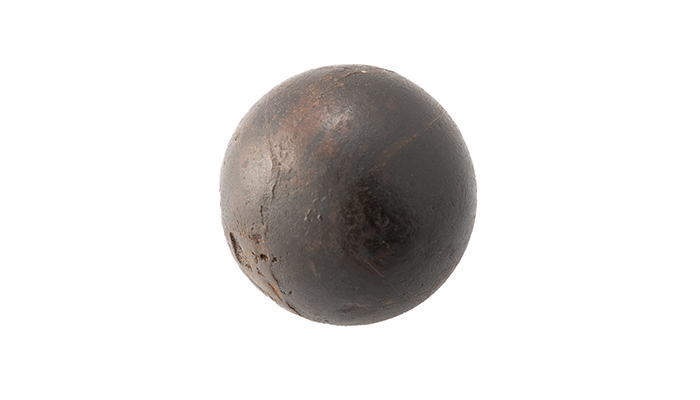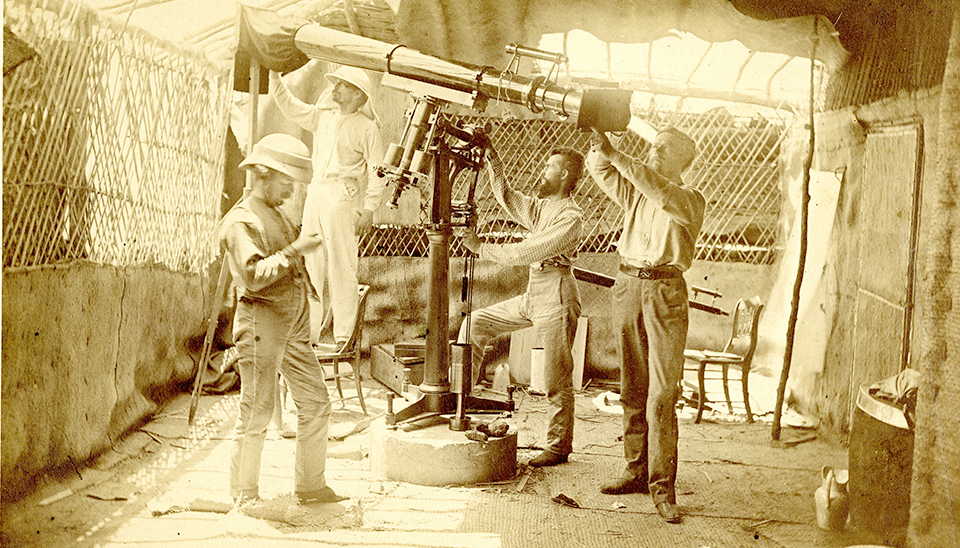Among the Anatomical Collections of the National Museum of Health and Medicine are several skulls from Union soldiers who fought and died during the Civil War. One skull in particular shows the incredible brutality and lethality of the weapons and tactics of one of America's most significant conflicts.
These remains are from an unknown African-American soldier who served in the 54th Massachusetts Infantry Regiment, an African American regiment raised by northern forces during the Civil War. Efforts by a Federal Bureau of Investigation artist have now given a face to this unknown soldier.
The regiment consisted of African-American enlisted men under the command of white officers. Efforts to enlist the men were led by well-known abolitionists, such as Frederick Douglass and Martin Delany. The commanding officer was Colonel Robert Gould Shaw, the son of Boston abolitionists. A fictionalized version of the regiment's heroic story was portrayed in the movie "Glory" starring Morgan Freeman, Denzel Washington, and Matthew Broderick.

1890 chromolithograph depicting the 54th Massachusetts Regiment storming Fort Wagner. (Image courtesy National Portrait Gallery, Smithsonian Institution.)
The 54th Massachusetts Infantry Regiment trained near Boston and was mustered into federal service on May 13, 1863 and arrived in South Carolina in July of the same year. On the night of July 18, 1863, approximately 600 men of the regiment assaulted Battery Wagner on Morris Island, South Carolina. The regiment led a frontal assault on the heavily fortified battery. In addition to small arms fire from entrenched infantry, they faced direct fire of solid shot and canister rounds from four 32-pound cannons and two 12-pound field howitzers. The regiment was able to reach the walls of the fort but were unable to dislodge its defenders and were subsequently pinned down for more than an hour before being forced to pull back. Of approximately 600 men who made the charge, 256 were killed, wounded, or missing. Subsequent siege of the fort would cause it to be abandoned by late summer 1863, effectively closing the port of Charleston for the remainder of the war. While the regiment failed to take the fort, its courage in the face of enemy fire electrified the nation.
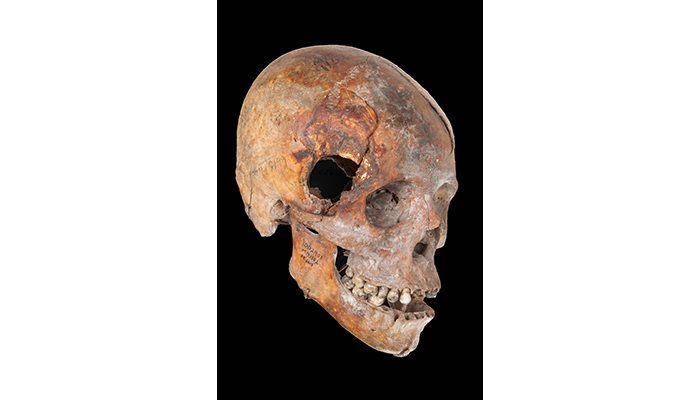
The skull of a black Union soldier of the 54th Massachusetts found in 1876 on Morris Island, South Carolina showing the exit wound of an iron projectile. (130117-A-MP902-006: NMHM photo)
The skull was discovered in 1876 near Battery Wagner. Analysis of the skull showed it belonged to a man of African descent who had sustained a lethal injury with a large entry wound behind the left ear. Remains of the iron projectile that caused the wound were found in the skull. As the iron pieces rusted, they discolored the skull, giving it an orange tint. The size of the entry wound and the iron fragments found within were consistent with the 1.05-1.08 inch iron balls from a canister round fired from a 12-pound bronze field howitzer. Canister rounds were used by artillerymen against infantry and cavalry in close-quarter combat. The rounds have a shotgun effect, spreading small iron balls with devastating impact, often shredding its target at short distances. The 12-pound howitzer's canister round contained 48 1.05-1.08 inch diameter iron balls.
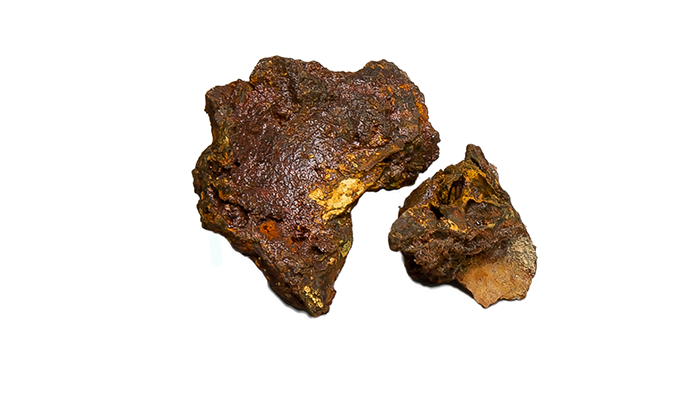
In 2018, museum staff began working with FBI artist Lisa Bailey to make a 3D facial approximation of the 54th Massachusetts Infantry Regiment soldier using a cast made from the original skull. The process started with a computed tomography scan, also known as a CT scan, of the skull. Bailey used the CT scan data to produce a model skull made of resin. Using clay, Bailey used her artistic skills, and her knowledge of anatomy and osteology, to construct a face over the resin skull. The final clay model was then used to make a mold for the plaster casting of the bust.
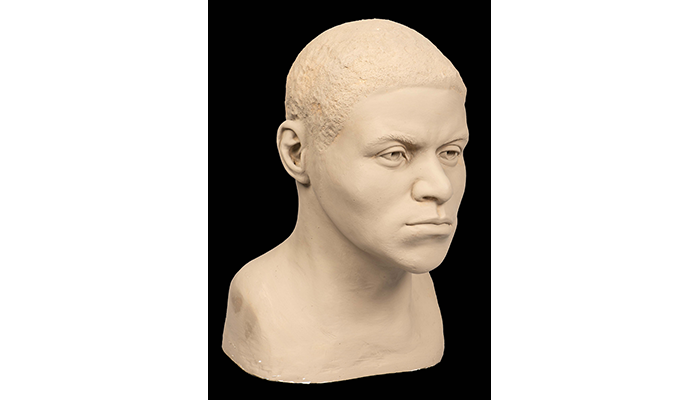
The facial reconstruction produced from the skull of a 54th Massachusetts Volunteer by visual information specialist Lisa Bailey at the FBI Laboratory in Quantico, Virginia. (190718-D-MP902-0001: NMHM photo)
While we may never be able to identify the individual, Bailey's efforts have resulted in putting a face on an American soldier involved in a significant moment in American history.
Resources
Hill, Steven. "Effects of Canister Shot in the Civil War: Skull of a Soldier of the 54th Massachusetts Volunteers." Military Medicine 179, no. 10 (October 2014): 1171-1172. https://doi.org/10.7205/MILMED-D-14-00234
Relevant Links:
54th Massachusetts Regiment
https://www.nps.gov/articles/54th-massachusetts-regiment.htm



